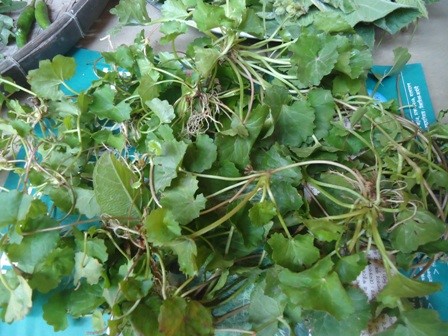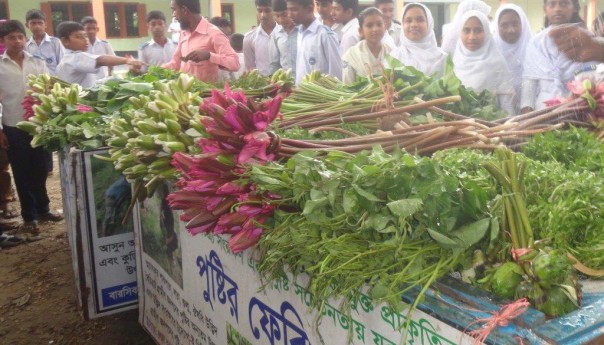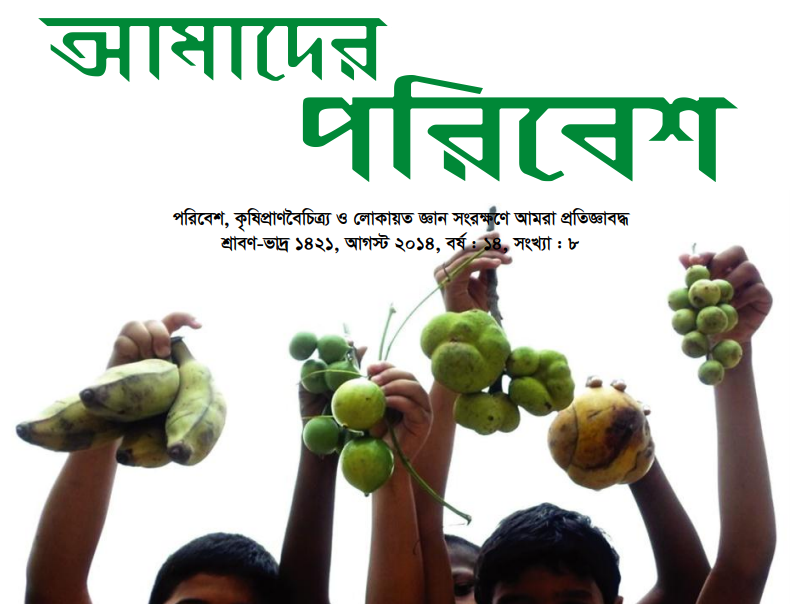Silvanus Lamin
Uncultivated plants are known as the plants which grow naturally in the land (yard, wetlands, forest and other fallow lands) without any intervention of humans. On the other hand, uncultivated food is those eatables which grow naturally without protected and uncultured method. The uncultivated foods mainly are those plants which contain multi-nutrients such as beta-carotene, calcium, iron etc. Leafy green vegetables, tubers, mushrooms and other eatables are the example of uncultivated food.There exist diverse food plants in the nature which play vital role to make the nature and environment sound and healthy. By saying uncultivated food plant diversity it refers to the diversity of these uncultivated food plant which people collect in the nature and consume to meet food demand. These plants add diversity to local food systems, reinforce culture and contribute with diversity to farming systems, and could be important for household food security, health, and nutrition and income generation. For instance, in Bangladesh uncultivated foods such as leafy greens, tubers and wild fruits meet food requirements of communities. Local people consumed uncultivated foods at least almost every day. In addition to providing food directly, uncultivated plants provide an opportunity for cash generation. Many uncultivated plant resources have an important component of the local society and culture and loss of those means a loss of important components of culture and religion. Uncultivated plants are also used as folk medicines for common ailments such as headache, swellings, wounds, scabies, and digestion problems.

There is an intricate relationship between the ecosystem and uncultivated food plants. The plants grow naturally in the healthy and sound ecosystem. On the other words, it is the uncultivated food plants that help to keep the ecosystem healthy and sound as they are sources of foods for other living organisms, keep the soil moisture and create a green shape all around. Thus, we find diverse uncultivated food plants in the nature where the ecosystem is sound and healthy. Generally, people in the rural area know the use and food value of these plants. Foods from uncultivated species forms an integral part of the daily diets of many rural households as well. The uncultivated food plants provide nutrition to them and keep them healthy. These plants also are used as medicines to cure different diseases. The rural people have been using their indigenous knowledge to use and consume these uncultivated foods which ensure food security and nutritional demand of them. Besides, the uncultivated food plants are used as livestock fodders. Rural people collect and nourish these plants so that they could ensure their food demands and could feed their livestock.
On the other hand, rural people through their indigenous knowledge share with each other regarding the use of the uncultivated plants which somehow strengthens their mutual relation. These plants are parts of their rural culture. Many uncultivated plants are used as sacred elements during the religious festivals of the rural people as well. Thus, it has been seen that uncultivated food plants do not only meet the food, nutrition and medicinal needs of the rural people but also they are parts and basis of their religious and cultural events. The uncultivated food plants have close relationship with the nature and environment. The depletion of the nature and environment through different development intervention of humans is responsible for the loss and extinction of many uncultivated plants. But these foods crops are neglected in country programs and policies. So far, no concrete effort has been made to document and develop an inventory of these plants species.

Nonetheless, BARCIK through its different development intervention has been motivating and encouraging rural people to conserve and protect the uncultivated plants. The organization has been organizing campaigns such as fair, cooking contest and demonstration to familiarize and emphasize on the importance of uncultivated food plants as foods, medicines and cultural and religious elements. It is through the intervention of BARCIK that the rural people in its working areas now are taking action to protect and conserve the uncultivated food plants and many people have come to know and learn regarding the food and medicinal value of these plants.
However, uncultivated food plants have high nutritional content, including proteins, vitamin B2, and vitamin C, which can be used as alternatives to conventional plant-based human diets. The available literature has revealed that some wild edible plants also have medicinal properties. These plants also enrich the biodiversity and contribute to ensure environmental sustainability. Therefore, it is our responsibility to take initiative to protect and conserve the uncultivated food plants for our own wellbeing.

